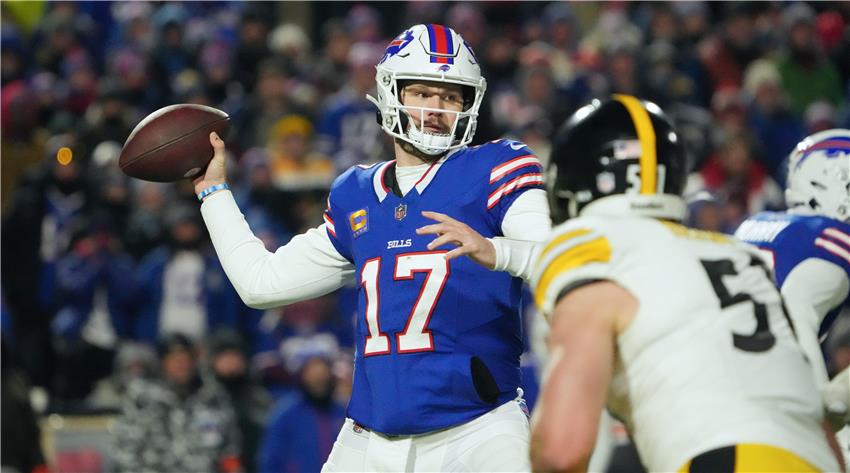
The Changes in Quarterback Play- How Modern Quarterbacks Are Making the NFL Different
The quarterback is the most important person on a football team because they are in charge of leading their team to win.
This job, however, has changed a great deal over the years. These days, quarterbacks aren’t just good at throwing the ball; they also make plays and can control the pace of a game by themselves. They are changing the rules of the NFL and making teams change how they play.
The quarterback position has changed over the years to meet the needs of the game. Johnny Unitas was a standard pocket passer, and Patrick Mahomes is a dual-threat ace. There are also online slot games with American football themes for football fans who like to play games at the same time. These games have stadium sounds, score symbols, and even extra rounds based on famous plays. When players combine these games with bonuses like the best $300 free chip no deposit casino deals available, the action gets even more exciting. Players can feel like they're on the football field while spinning for real wins.
A Quick Overview of NFL QBs
To grasp how quarterback play has evolved throughout time, we must return to the origins. Plays were rather basic and mostly dependent on throwing the ball when the NFL began in 1920. Although Green Bay Packers quarterback Arnie Herber generally passes the ball, sometimes he throws long balls in hopes of sparking significant plays. It wasn’t important to be accurate and pass often like it is now.
By the 1950s and 60s the quarterback position was becoming more cerebral, running complex play-actions, deciphering defenses. Bart Starr and Johnny Unitas were among the players that formed the mold of pocket passers and used to rely on pocket decision-making and accuracy. Teams during this era gravitated towards organized offense and quarterbacks worked under intense instructions.
In the 1980s and 1990s, the West Coast system became even more advanced. Bill Walsh made it famous, and Joe Montana did a great job running it. It was important for quarterbacks to be accurate and quick when throwing short passes. This set the stage for modern passing attempts.
The 2000s saw a shift with the emergence of dual-threat passers. For decades, quarterbacks fit this standard mold.
Different Things That Make a Good Quarterback
In the past, coaches looked for quarterbacks who could run the field from inside the pocket. These were the players:
- Strength and accuracy. Being strong and accurate means being able to throw accurate passes over long distances.
- Cerebral. They are known for being able to read defenses, call audibles, and guess what plays will happen next.
- Structure-driven: Executing plays exactly as written, with not many changes.
- Immobile: Playing exactly as written without much variation is what we do.
Legendary quarterbacks like Peyton Manning and Tom Brady were great examples of this role. Thanks to Manning’s pre-snap readings and Brady’s precision passing, they enjoyed legendary careers confirming their positions among the NFL's all-time greats.
But camping in the pocket was no longer the ideal option for quarterbacks who sought awards as opponents became quicker and more nimble.
The New Wave of Quarterbacks
There is a new type of quarterback in the NFL right now. They are athletes who are changing the rules. With names like Patrick Mahomes, Lamar Jackson, Josh Allen, and Jalen Hurts, they have skills that go against what most people think of as a quarterback.
These players today are smart about football and can throw the ball correctly. They are also strong and artistic. NFL quarterbacks’ ability to improvise has changed what is expected of them forever.
Offensive plans are also changing to fit their strengths. Run-pass options (RPOs) and zone-read schemes are becoming more popular, along with new ways of calling plays. This shows how flexible players are becoming. These days, teams use players’ ability to move around to make defenders miss matchups, making the most of the skills these quarterbacks offer.
What distinguishes today’s quarterbacks is this:
- Athleticism. Players like Lamar Jackson change the way quarterbacks play by being able to run and hide at high speeds, turning broken plays into huge wins.
- Arm Strength and Creativity. Patrick Mahomes can throw sidearms, no-look passes, and short passes while running. Because of how creative he is at his job, the Kansas City Chiefs’ attack is now the best in the NFL.
- Dual-Threat Skills. Both Jalen Hurts and Josh Allen are great at passing the ball and running the ball. Their ability to run through defenders or throw precise passes keeps the other team wondering.
- Improvisation. When they're under a lot of stress, these quarterbacks are great at improvising. They can extend plays and complete passes that would have made them heroes just ten years ago.
This current method isn’t just flashy; it works. The last five MVPs, from 2018 to 2022, were all passers who were very mobile and flexible. This says a lot about how highly these skills are valued in the league right now.
Challenging the Status Quo
This new group of players is very important because they are changing the game for everyone else. Here are some examples of how ripples can happen:
Changes to the defense
To stop players who can do a lot of different things, defenses have had to adapt. To keep up, defenders need to be more active and able to change ways.
Changes to the draft and the lineup
Teams are putting more stress on picking players who can run and pass well. Mobility used to be a plus, but these days it is often a must.
Expanded Playbooks
Playbooks are getting bigger, and offensive managers are coming up with more clever plays that use the quarterback’s physical skills.
Changing Coaching Styles
Coaches increasingly value flexibility and creativity, letting players experiment and create plays.
These changes are affecting player play and team composition.
What Does the Future Hold for Quarterbacks?
The players who are altering the manner in which quarterbacks play are as spiced up as the future of the game. These are the trend you should watch in the next coming years:
A bigger role for AI and analytics
Predictive analytics might enable players to make even better judgments by helping them project how the defense will form up in real time.
Positionless Offenses
There may be a combination of roles for quarterbacks, such as passing, receiving on special plays or swapping to another position on the field.
Integration and Globalization
As the NFL grows around the world, there may be a lot more foreign players (some from other sports, like rugby) applying to be quarterbacks.
Youth Mobility
Young quarterbacks already know how to play both in the pocket and on the run when they first come into the game. This range of skills will only help the job grow.
Going in the right direction, it is not enough to stand tall in the middle and throw downfield. The players of the future need to be smart, fast, and able to change the game.
Rethinking the game, one quarterback at a time
The quarterback position has changed over time to represent how the NFL has changed: it is now faster, smarter, and more intriguing than ever. Modern players are going beyond what people thought was possible. This thrills fans, confuses defenders, and changes the way NFL scores and odds are calculated in real time.
